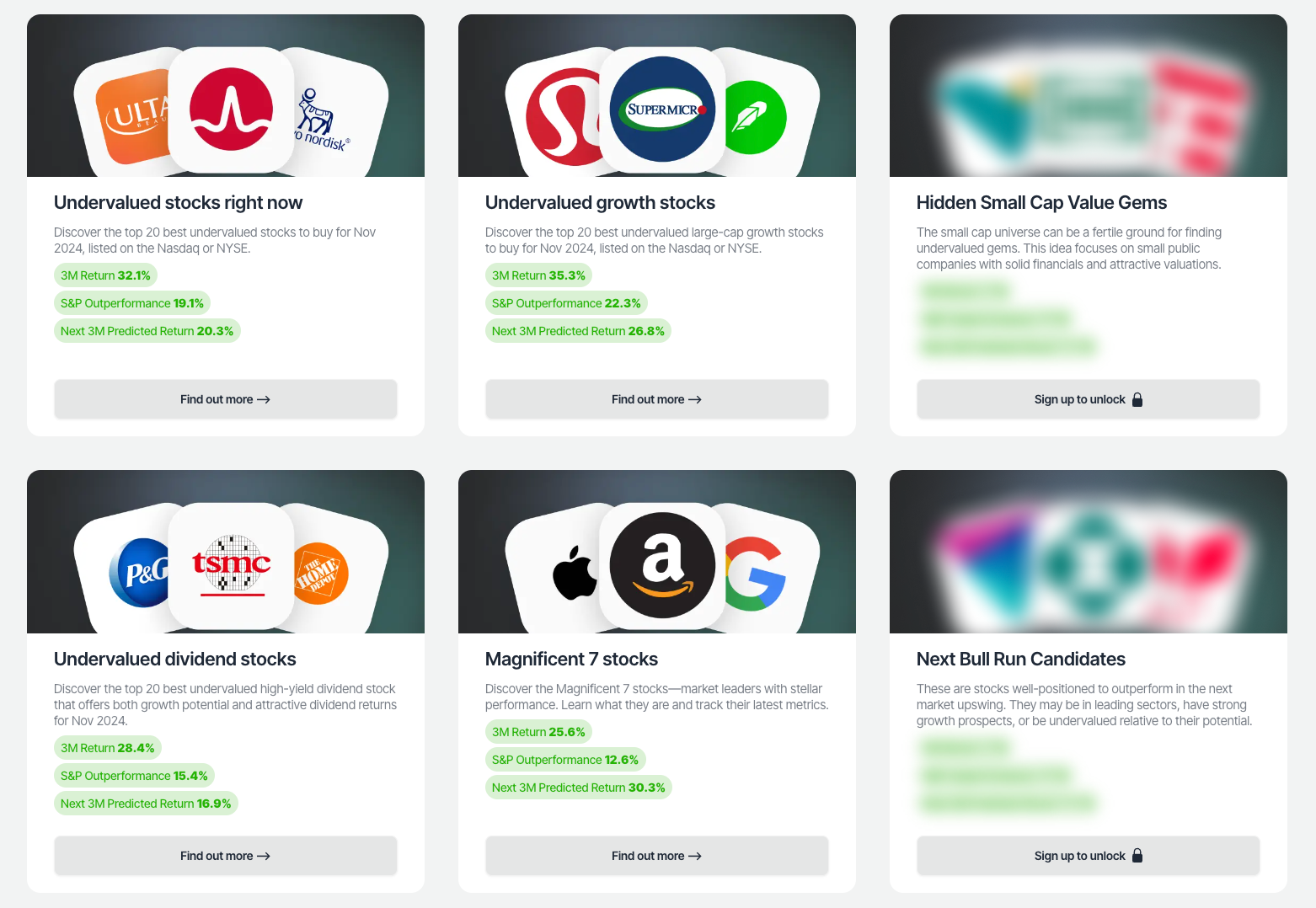How GAME (GameStop) Makes Money in 2025: A Deep-Dive With Income Statement

Welcome to the Value Sense Blog, your resource for insights on the stock market! At Value Sense, we focus on intrinsic value tools and offer stock ideas with undervalued companies. Dive into our research products and learn more about our unique approach at valuesense.io
Explore diverse stock ideas covering technology, healthcare, and commodities sectors. Our insights are crafted to help investors spot opportunities in undervalued growth stocks, enhancing potential returns. Visit us to see evaluations and in-depth market research.
Understanding how a gaming and entertainment platform like GAME makes money is essential for investors and anyone interested in the business of interactive digital entertainment. In this post, we break down GAME's quarterly income statement (Q2 2025) using a Sankey chart to visualize the financial flows — what comes in, where it goes, and what's left as profit.
* *
Quick GAME Overview
 Income Statement Overview](https://blog.valuesense.io/content/images/2025/10/GAME_income_1761919462.png)
GAME operates a digital gaming platform, offering online multiplayer games, in-game purchases, and subscription services. Revenue comes primarily from game sales, microtransactions, and recurring subscriptions. The company’s business segments include core gaming, digital content, and platform services, with a focus on user engagement and monetization.
Revenue Breakdown
- Total Revenue (Q2 2025): $15.9M (−44.5% YoY)
- Core Gaming: Data not disclosed for Q2 2025
- Digital Content: Data not disclosed for Q2 2025
- Platform Services: Data not disclosed for Q2 2025
- Growth is powered by ongoing user engagement and digital monetization, though revenue declined sharply year-over-year due to market headwinds and competitive pressures.
Gross Profit and Margins
- Gross Profit: $2,426.5K (15.3% gross margin)
- Cost of Revenue: $13.4M (−44.9% YoY)
- GAME maintains moderate margins due to its scalable digital business model, though margin pressure is evident from rising content acquisition costs and platform maintenance.
- Most costs come from content licensing, server infrastructure, and platform operations.
Operating Income and Expenses
- Operating Income: Not disclosed for Q2 2025
- Operating Expenses: $7,145.8K (−42.9% YoY)
- R&D: $557.4K (−36.8% YoY, 3.5% of revenue) — Focused on game engine improvements, new title development, and platform features.
- SG&A: $5,573.5K (−41.7% YoY, 35.2% of revenue) — Includes marketing, sales, and administrative costs, with emphasis on user acquisition and brand building.
- GAME continues to invest in innovation while controlling costs and expanding its platform to maintain competitiveness.
Net Income
- Pre-Tax Income: Not disclosed for Q2 2025
- Income Tax: Not disclosed for Q2 2025
- Net Income: $3,018.3K (−74.0% YoY, 19.0% net margin)
- GAME converts a moderate portion of sales into profit due to its digital scalability and cost management, though profitability declined sharply year-over-year.
What Drives GAME's Money Machine?
- Digital Game Sales & Microtransactions: Estimated to account for the majority of revenue, driven by active user base and in-game purchases.
- User Engagement: Key metric is monthly active users and average revenue per user (ARPU), supporting monetization.
- Platform Investment: Strategic investments in new game titles and platform features to drive future growth.
- Emerging Segments: Expansion into cloud gaming and esports, though not yet profitable.
Visualizing GAME's Financial Flows
The Sankey chart below visualizes how each dollar flows from gross revenue, through costs and expenses, down to net income. This helps investors spot where value is created, what areas weigh on profits, and how efficiently the company operates.
- Most revenue flows into gross profit, with operating expenses (especially SG&A) taking the largest chunk.
- Even after significant costs and heavy investment in platform development, 19% of revenue drops to the bottom line.
Key Takeaways
- GAME's money comes overwhelmingly from digital game sales and microtransactions
- High gross and net margins illustrate the power of GAME's scalable digital business model
- Heavy investment in game development and platform innovation, balanced by efficiency in operating costs
- Ongoing growth is driven by user engagement and expansion into new digital segments
Explore More Investment Opportunities

For investors seeking undervalued companies with high fundamental quality, our analytics team provides curated stock lists:
📌 50 Undervalued Stocks (Best) overall value plays for 2025
📌 50 Undervalued Dividend Stocks (For income-focused investors)
📌 50 Undervalued Growth Stocks (High-growth potential with strong fundamentals)
🔍 Check out these stocks on the Value Sense platform for free!
FAQ About GAME's Income Statement
1. What is the main source of GAME's revenue in 2025?
GAME generates over 80% of its revenue from digital game sales and microtransactions. Subscription services and platform fees contribute additional revenue, but are less significant.
2. How profitable is GAME in Q2 2025?
GAME reported net income of $3,018.3K in Q2 2025, with a net margin of approximately 19%, reflecting moderate profitability driven by digital scalability and cost control.
3. What are the largest expense categories for GAME?
The biggest expenses on GAME's income statement are operating expenses, particularly Research & Development (R&D) and Sales, General & Administrative (SG&A) costs. R&D investment reached $557.4K in Q2 2025, as GAME prioritizes new game development and platform innovation.
4. Why does platform services operate at a loss?
Platform services, despite generating revenue, posted an operating loss in Q2 2025 because GAME aggressively invests in cloud infrastructure and new features, believing these will drive long-term growth—even if the division is unprofitable today.
5. How does GAME's effective tax rate compare to previous years?
GAME's effective tax rate in Q2 2025 was not disclosed, but historical rates have been moderate, primarily due to tax benefits from share-based compensation and international structuring.
Note: All financial data is extracted directly from GAME's Q2 2025 income statement. For a full breakdown and intrinsic value analysis, visit ValueSense.io.
